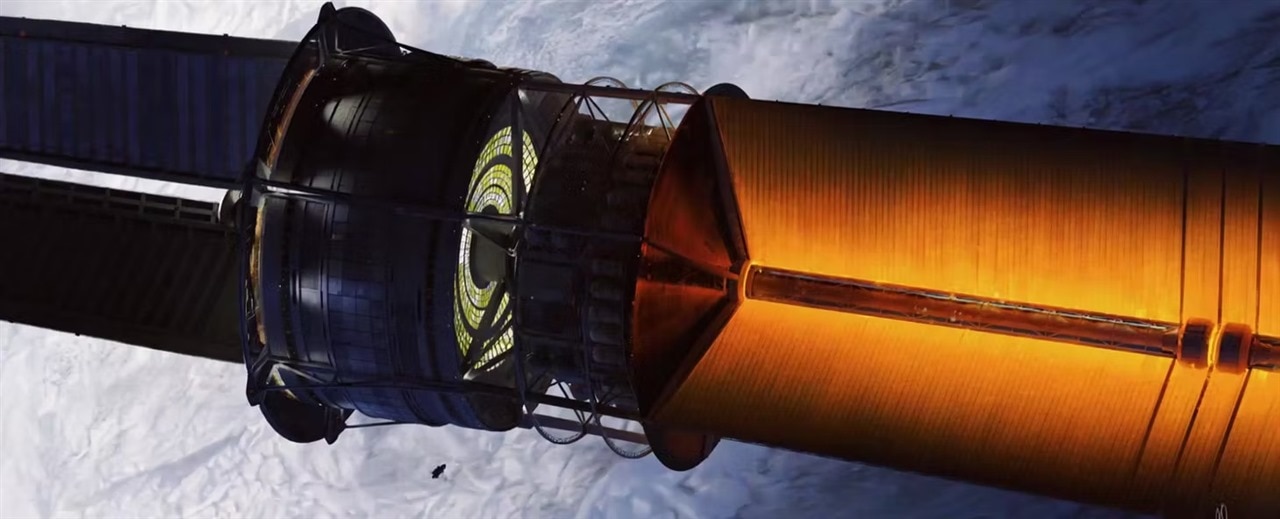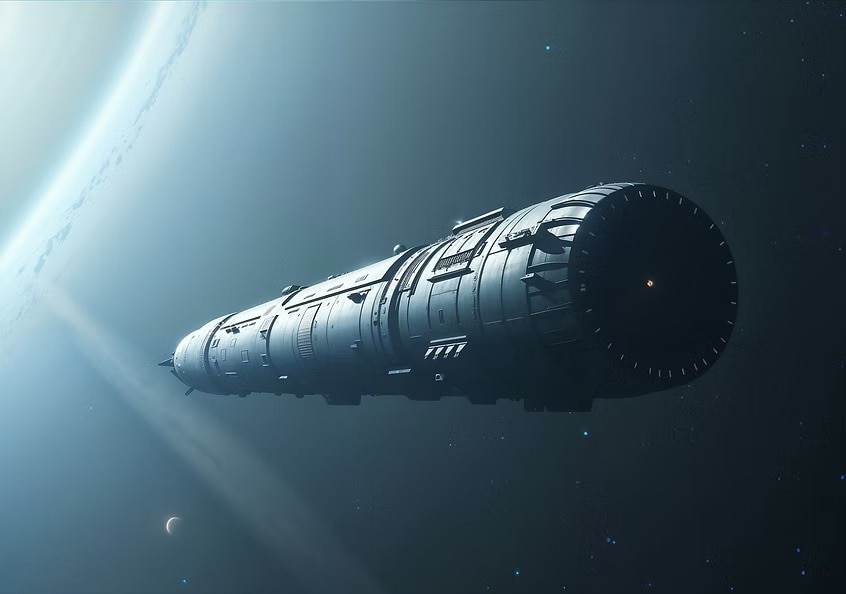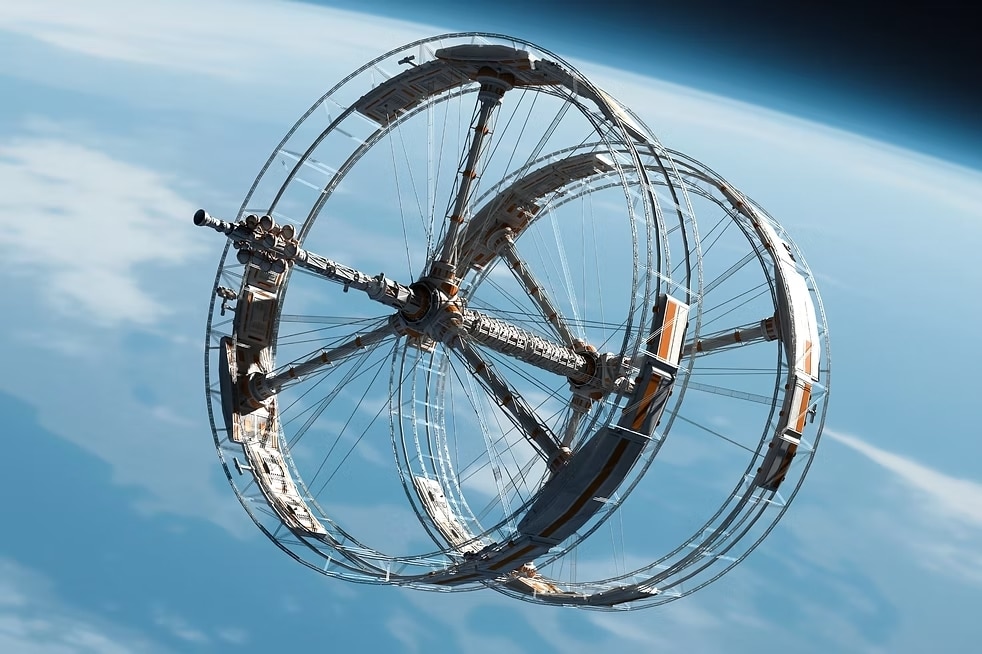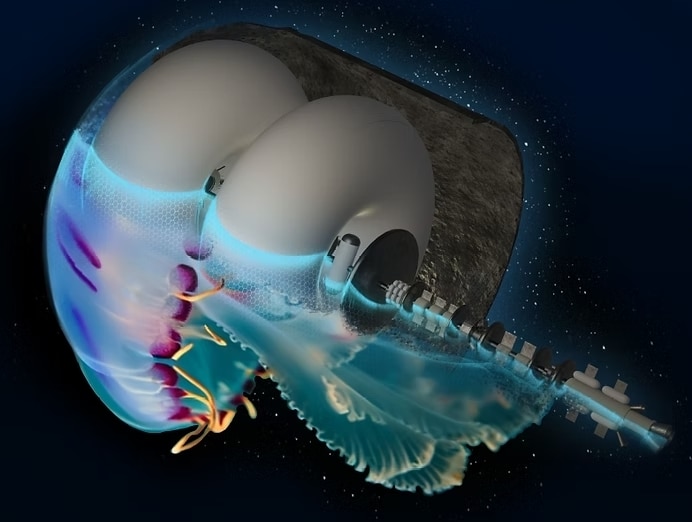
The Project Hyperion competition had hundreds of entrants, with three chosen recently. (Image Credit: i4is)
Project Hyperion and the UK-based Initiative for Interstellar Studies (i4is) launched a $10,000 competition to design Generational ships using modern and near-future technology. The contest had hundreds of global entrants, and the top three winners were announced on July 23rd, 2025. All three winners are recognized for detailed, interdisciplinary concepts that demonstrate how human societies could survive and grow while traveling to cosmic worlds.

The spacecraft stretches 36 miles and uses a Direct Fusion Drive for propulsion. (Image Credit: The Chrysalis)
The Chrysalis received first place. This spaceship features a cylindrical structure to prevent micrometeoroids and orbital debris (MMOD) from slamming into the frontal section. It also keeps structural stresses down while it accelerates and decelerates.
Spanning approximately 36 miles in length with a 4-mile diameter, the craft has a mass of 2.4 billion metric tons. It relies on a Direct Fusion Drive for propulsion, which burns deuterium and Helium-3, producing a steady acceleration at 0.1g. The team predicts it will accelerate during the first year of interstellar travel, spend four hundred years coasting through space, and decelerate for one year while approaching Proxima b.
The forward section features the habitat with layers of concentric rotating rings. Moving inward, these layers are for food production and ecosystems, communal spaces, dwellings and gardens, operational facilities, storage decks, and the axial core. With continuous rotation, the shells generate artificial gravity similar to Earth's, making the structure stable for housing, utilities, and resources required to sustain a population of 600.
The ship has a Cosmo Dome, a panoramic chamber for passengers to enjoy cosmic views as they engage in low-gravity recreational activities. It's also designed with a secondary rotation system that offsets unwanted motion by using adjacent rings that rotate in opposite directions. In this case, odd layers rotate clockwise while uneven layers rotate counterclockwise to balance rotational forces.

The WFP Extreme spaceship simulates the Earth's gravity by using two large rings spanning 500 meters across. (Image Credit: WFP Extreme)
WFP Extreme won second place. This craft has a central core flanked by two enormous rings rotating in opposite directions to simulate gravity and reduce Coriolis effects. Both rings span 500 meters across, featuring workspaces, living quarters, and social areas divided into three districts per ring, split into six neighborhoods.
All the hydroponic farms, energy systems, and control stations are set within the ship's core. These connect to the rings through reinforced arms with elevators. A running track and a pedestrian walkway connect all six of the neighborhoods. Elevators enable access to the core, ensuring social and cultural interaction between various communities on the ship.

The team behind the Systema Stellare Proximum found inspiration in Jellyfish to design the spaceship's structure. (Image Credit: Systema Stellare Proximum)
Systema Stellare Proximum placed in third. The team called their ship Systema Stellare Proximum, a starship built inside a hollow asteroid encasing two counterrotating Stanford Torii habitats. A quantum AI system navigates the ship, while propulsion starts with a nuclear pulse before switching to ion engines in the secondary stage.
The starship's design is influenced by biomimicry, modeled after a jellyfish. Its asteroid shell has a bell-like shape that blocks radiation and impacts. Meanwhile, the leading edge is made of layered materials that disperse energy from impacts. Additionally, the shield features self-repairing robots and technologies that fix damaged areas.
The spacecraft's pulsed plasma ion propulsion system also uses biomimicry, modeled after the jellyfish's rhythmic motion. A swarm of tethered drones uses electrostatic propulsion for maneuverability or stabilization. The ship has a sensor network across the hull to monitor resources, environmental hazards, and radiation levels. Adaptive navigation systems then use this data to adjust the spacecraft's path.
The internal modular habitat can be reconfigured and expanded, similar to jellyfish structures. Waste is transformed into oxygen and food using algae and other microorganisms via closed-loop bioregenerative life support. Hydroponic and aquaponic systems provide clean water, fish, and crops. Finally, the ship has a laser array that targets and vaporizes micrometeoroids too small for the asteroid shell to block.
Have a story tip? Message me at: http://twitter.com/Cabe_Atwell
